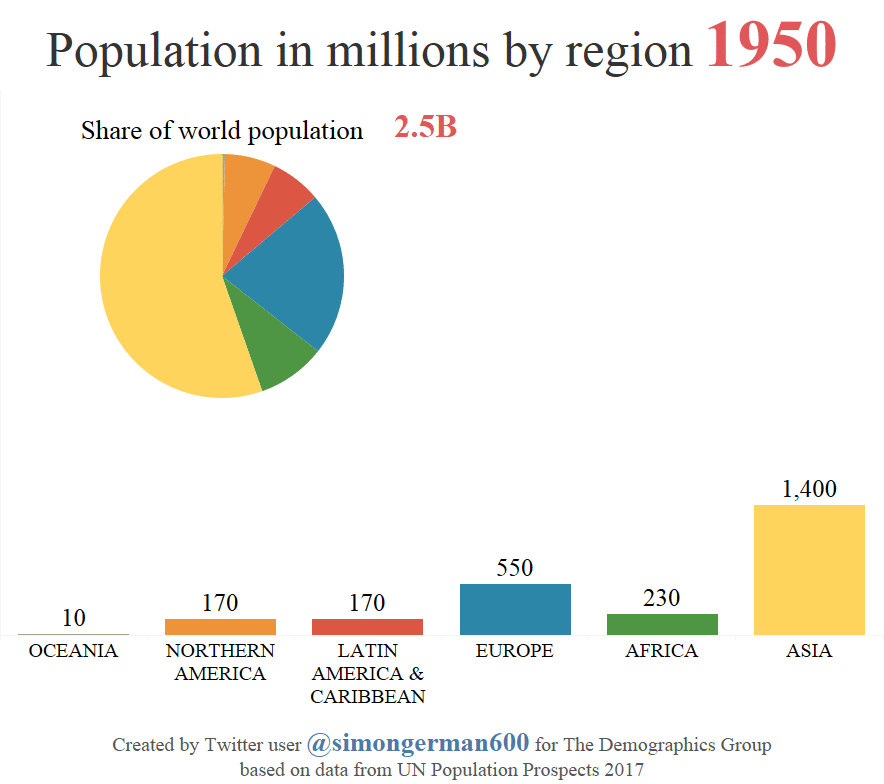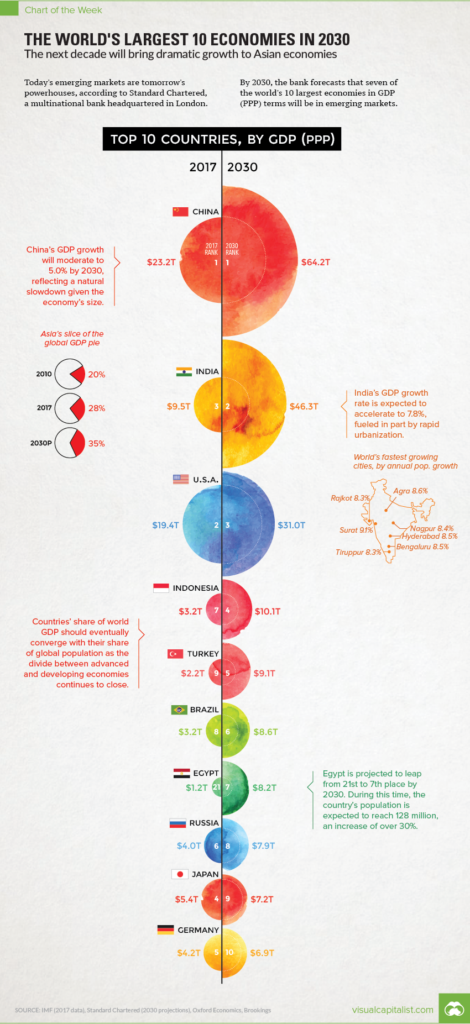
Is there such a thing as Universal Spanish?
Accurate and timely translation services are integral in today’s increasingly globalized legal…
29.12.2021

If you’re looking for the best languages to learn in 2023 so you can flaunt your language skills next time you’re vacationing, this list isn’t for you.
Attending language learning programs requires time and resources. According to the Foreign Service Institute, you’ll need anywhere between 24 and 88 weeks to master another bhasha.
So if learning a new language means business opportunities, and you're with us when we say Google Translate can get you only so far, you’re in the right place.
We wanted to build an impartial, data-driven list of the best languages to learn. To do that, we cross-analyzed five variables.
They included economic indicators, but not only.
Here they are:
In 2016, Dr. Kai L. Chan, a distinguished fellow at INSEAD, devised the Power Language Index (PLI). It’s a systematic way of evaluating the influence and reach of languages. PLI scores five opportunities a new language brings:
Each opportunity is built of a set of variables:

The PLI is already a trustworthy metric. It scores the reach of a language with the current state of world affairs. But will the business world’s clucking order remain the same in 25 years?
To add a layer of future-proof reliability, we had to look further.

Demographic shifts are a good signal of a language's changing reach and power.
Let's look at what the UN’s population prospects report has to say about this.
When thinking of population growth, the first region that comes to mind is "Asia".
But can you see another region ramping up the pace?
To look at a language’s trade potential, we had to go further than looking at the population growth.
As far as economic growth around the world goes, it was clear who the top-three economic mammoths would be in 2030. We were more curious about any underdogs causing a major overhaul in positions 5 through 10.
To do that, we looked at a recent study by Standard Chartered. And indeed, it showed some curious shifts.

China, India, and the US top the chart. But look further down. Who would have thought? By 2030, Indonesia, Egypt, and Turkey are projected to fall into the world’s top five economies.
After economics, we looked at language aspects. The intruding ones, to be precise.

We included the latest data from Education First on the English Proficiency Index (EPI) as a ranking factor in our “best languages to learn” score. The higher the EPI, the lower the grade a language got.
Because let’s be honest. What’s the point of all the studying if you can get away with English?

We’ve been breaking language barriers in 200 languages for over 15 years.
One of the best insights is the change in demand and supply of a language. And if you’re planning on making languages become your bread and butter, keep a keen eye on our LingPerfect Language Demand score below.
We churned each of these five data sources and combined the results in a single score. Because some scores had different ranges, we leveled them on one single 1–10 scale.
The final score for each language looks like this:
| Criterion | Min | Max | Total |
| Language reach (Language Power Index) | 1 | 10 | 50/50 |
| Population growth | 1 | 10 | |
| Economic growth | 1 | 10 | |
| (absence of) English Proficiency* | 1 | 10 | |
| LingPerfect Language Demand score | 1 | 10 | |
| Total | 5 | 50 |
*We inverted the English Proficiency Index so as not to skew the result. The lower the English proficiency level, the higher the score.
Enough babbling about data. Eager to see the results of the 7 best languages in the world to learn?

China is and remains number on the list of the top 10 biggest economies. Its population growth may be slowing down, but its booming economy makes for it just fine.
Mandarin Chinese belongs to a narrow language family, so it won’t help pick up another language easily. But with 1.3 billion native speakers, that shouldn’t be a problem. And among all Chinese dialects (like Cantonese), it's number 1 in the number of speakers.
Last, China has a low penetration of English as lingua franca, making learning Mandarin Chinese a must if you’ve set your eyes on the Middle Kingdom.
| Best Language to Learn Criterion | Score |
| Language reach | 10/10 |
| Population growth | 7/10 |
| Economic growth | 10/10 |
| (absence of) English Proficiency | 10/10 |
| LingPerfect Language Demand score | 10/10 |
| Total Best Language to Learn in 2023 score | 47/50 |
“Super-hard”: 88 weeks (2,200 class hours)
(But hey, it’s worth it)
Surprised? If you remember the population growth chart above, you shouldn’t be.
There are 11 countries in Africa where French is the la langue officielle. So French may well shed off its coat of language of love and become a language of new business opportunities.
There are two hundred thirty million native French speakers today. But by 2050, this number could top the 700 million mark due to demographic shifts in Africa.
Also, French belongs to the romance language group. Conquer your je m’appelle, and it will take you no time to master Spanish, Portuguese, and Italian.
| Best Language to Learn Criterion | Score |
| Language reach | 8/10 |
| Population growth | 10/10 |
| Economic growth | 9/10 |
| (absence of) English Proficiency | 9/10 |
| LingPerfect Language Demand score | 8/10 |
| Total Best Language to Learn in 2023 score | 44/50 |
“Easy peasy”: 30 weeks (750 class hours)
The Language Power Index ranks Arabic as the fifth most influential language. And rightfully so.
Arabic, the "lingua franca" of the Middle East, is the official or co-official language in 23 countries. So even if the number of native Arabic speakers is much lower than, say, Hindi (270 opposed to 615 million Hindi natives), enrolling in an Arabic language learning program will make you go miles.
Standard Arabic is widely spoken in the Middle East, a region that is already an economic powerhouse. And if you consider Egypt’s economic projection from above, learning Arabic will guarantee you a high ROI.
| Criterion | Score |
| Language reach | 5/10 |
| Population growth | 7/10 |
| Economic growth | 9/10 |
| (absence of) English Proficiency | 10/10 |
| LingPerfect Language Demand score | 9/10 |
| Total Best Language to Learn in 2023 score | 40/50 |
“Super-hard”: 88 weeks (2,200 class hours)
This one needs no pepping up. Spanish is one of the most widely spoken languages in the world – 534 million speakers – and is the official language in 21 countries. Add another four where Spanish is considered a “significant language” (Andorra, Gibraltar, Belize, the United States), and you’re looking at the most geographically widespread language on Earth.
Besides being a door to South America and Latin America in general, a fifth of the population speaks Spanish as their first language in the US alone. That’s a whopping 60 million native speakers.
Learning Spanish is as strategic as learning Arabic. The reason el idioma scored a tad less was due to higher penetration of English Proficiency in some of its countries and a slightly lower economic growth outlook.
| Criterion | Score |
| Language reach | 9/10 |
| Population growth | 6/10 |
| Economic growth | 6/10 |
| (absence of) English Proficiency | 5/10 |
| LingPerfect Language Demand score | 9/10 |
| Total Best Language to Learn in 2023 score | 35/50 |
“Easy peasy”: 24 weeks (700 class hours)
Bahasa Indonesia is undoubtedly the most exotic one on our top-seven list. Unknown to many people, Indonesian is spoken by almost 200 million people.
The major reason that will drive its demand is Indonesia’s projection to become a major economic powerhouse in the following years—right up there next to China, India, and the US.
We’ve also seen a solid rise in translation and localization requests, as the country is buckling down to get internet adoption beyond urban areas.
Indonesian is also easy to learn for English natives. The Foreign Service Institute estimates it will take you around the same time to learn it as German.
| Best Language to Learn Criterion | Score |
| Language reach | 4/10 |
| Population growth | 5/10 |
| Economic growth | 9/10 |
| (absence of) English Proficiency | 6/10 |
| LingPerfect Language Demand score | 7/10 |
| Total Best Language to Learn in 2023 score | 31/50 |
“Medium”: 46 weeks (900 class hours)
Turkish might get you to reach a “meager” 78 million population. But it’s a hidden gem worth exploring for your next language-learning adventure.
One reason is—again—Turkey’s prominent position as an economic superpower in the coming years.
Turkey also has one of the lowest rates of English Proficiency in the world.
And no. Learning Arabic won’t help you pick up Turkish.
The first one belongs to the Semitic language family. The second is an Altaic language. They share many words in their vocabularies, but their grammar and syntax work entirely differently.
Genealogically, Turkish is more closely related to Japanese than to Arabic.
The upside is its learning ease. Complimenting the restaurant chef with Çok lezzetli should take you about half the time compared to doing the same in Arabic or Chinese.
| Best Language to Learn Criterion | Score |
| Language reach | 3/10 |
| Population growth | 5/10 |
| Economic growth | 8/10 |
| (absence of) English Proficiency* | 8/10 |
| LingPerfect Language Demand score | 6/10 |
| Total Best Language to Learn in 2023 score | 30/50 |
“Medium”: 46 weeks (900 class hours)
It’s the world’s biggest country’s official language and the co-official language in Kazakhstan, Belarus, and Kyrgyzstan. Learning it will bring you closer to over 250 million people.
It’s also the lingua franca in its own right. Azerbaijan, Estonia, Georgia, Latvia, Lithuania, Moldova, Tajikistan, Turkmenistan, and Uzbekistan consider it the second language almost everyone learns.
Russia is part of the top 10 economic powers in the world. And future projections don’t seem to place it out of that hall of fame.
Beware, though. Learning Russian won’t be a walk in the park. But considering its vast reach and low English proficiency level, it’s worth honing your Spasibos.
Should you succeed, you’re up for another treat. You’ll learn a Slavic language, a language family of 315 million speakers.
| Best Language to Learn Criterion | Score |
| Language reach | 7/10 |
| Population growth | 4/10 |
| Economic growth | 4/10 |
| (absence of) English Proficiency | 5/10 |
| LingPerfect Language Demand score | 4/10 |
| Total Best Language to Learn in 2023 score | 24/50 |
“Hard”: 44 weeks (1,100 class hours)
We didn’t include the language difficulty score in our rank because if a language has strategic value, you should go for it no matter what.
But if those weeks listed below the language made your heart rush, this nifty chart will help put things into perspective.
| Language | Best Language to Learn score (out of 50) | Difficulty rate (weeks) |
| Spanish | 35 | 24 |
| French | 44 | 30 |
| Russian | 24 | 44 |
| Indonesian | 31 | 46 |
| Turkish | 30 | 46 |
| Mandarin Chinese | 47 | 88 |
| Arabic | 40 | 88 |
It turns out learning Spanish or French will get you the most bang for your learning buck.
We hope you found our data-driven language analysis useful. But when choosing the best language to learn, math is only part of the equation.
Two other things play a decisive role in choosing the language to learn:
Each of these seven languages will open many doors in the future. It’s up to you to pick the language—or country—you like.
Happy language learning.

Member of ATA, the American Translators Association

Member of GALA, the Globalization & Localization Association
ISO 9001:2015, 17100:2015, 13485:2016 and 27001:2013 certified
Language combinations
Words translated
Native linguists